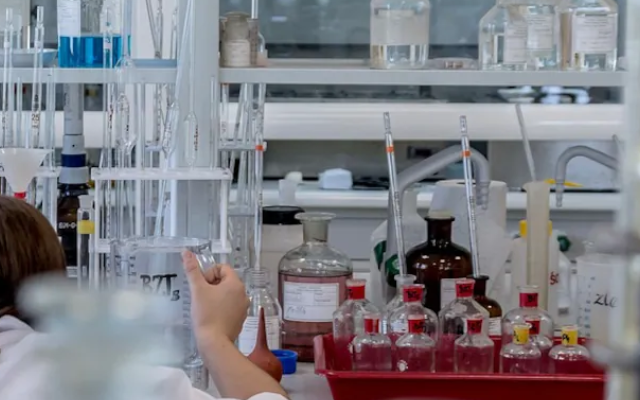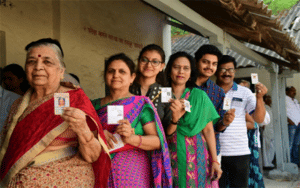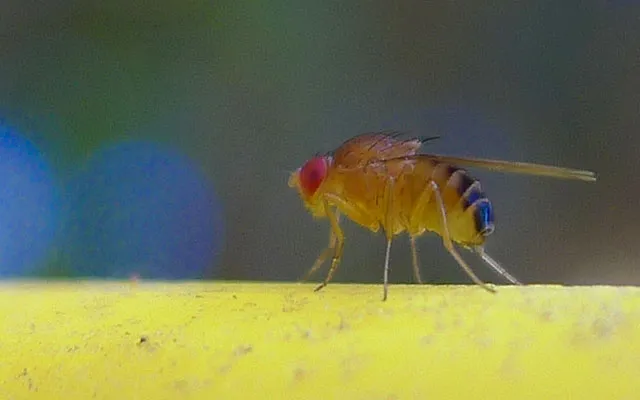Introduction
Just like the famous line, ‘water, water everywhere and not a drop to drink,’ in Samuel Taylor Coleridge’s poem, ‘The Rime of the Ancient Mariner,’ water is around us but is often not clean or safe enough to drink.
Safe and readily available water is important for public health, whether it is used for drinking, domestic use, food production or recreational purposes. Improved water supply and sanitation, and better management of water resources, can boost countries’ economic growth and can contribute greatly to poverty reduction.
In 2010, the UN General Assembly explicitly recognised the human right to water and sanitation. Everyone has the right to sufficient, continuous, safe, acceptable, physically accessible, and affordable water for personal and domestic use.
World Water Day (WWD), held on the 22 March every year, is an annual United Nations Observance that celebrates water and raises awareness of the two billion people currently living without access to safe water. The theme of WWD 2022 is “Groundwater – Making the invisible visible.”
It is heartening to see that water conservation has become a mass movement.
Drinking water services
Sustainable Development Goal target 6.1 calls for universal and equitable access to safe and affordable drinking water. The target is tracked with the indicator of “safely managed drinking water services” – drinking water from an improved water source that is located on premises, available when needed, and free from faecal and priority chemical contamination.
In 2017, 5.3 billion people used safely managed drinking-water services – that is, they used improved water sources located on premises, available when needed, and free from contamination. The remaining 2.2 billion people without safely managed services in 2017 included:
- 4 billion people with basic services, meaning an improved water source located within a round trip of 30 minutes
- 206 million people with limited services, or an improved water source requiring more than 30 minutes to collect water
- 435 million people taking water from unprotected wells and springs
- 144 million people collecting untreated surface water from lakes, ponds, rivers and streams.
- Groundwater accounts for 90 per cent of the drinking water requirements in rural India and nearly 50 per cent in urban areas. Excessive extraction has caused contamination. As a result, India is ranked 120 out of 122 countries in the global water quality index.
- 2021 was the year when the global water crisis crested as a top policy and public concern. In 2022 policymakers and business leaders will find themselves under increased pressure to adopt tangible solutions in critical areas such as adaptation, nature-based solutions and collaboration.
- The 2030 Water Resources Group estimates that if we continue to consume water as per the current rate, India will have only half the water it needs by 2030—a flashpoint that’s only eight years away.
Sharp geographic, sociocultural and economic inequalities persist, not only between rural and urban areas but also in towns and cities where people living in low-income, informal, or illegal settlements usually have less access to improved sources of drinking-water than other residents.
Water and health
Contaminated water and poor sanitation are linked to transmission of diseases such as cholera, diarrhoea, dysentery, hepatitis A, typhoid, and polio. Absent, inadequate, or inappropriately managed water and sanitation services expose individuals to preventable health risks. This is particularly the case in health care facilities where both patients and staff are placed at additional risk of infection and disease when water, sanitation, and hygiene services are lacking. Globally, 15 per cent of patients develop an infection during a hospital stay, with the proportion much greater in low-income countries.
Inadequate management of urban, industrial, and agricultural wastewater means the drinking-water of hundreds of millions of people is dangerously contaminated or chemically polluted.
Some 829 000 people are estimated to die each year from diarrhoea as a result of unsafe drinking-water, sanitation, and hand hygiene. Yet diarrhoea is largely preventable, and the deaths of 297 000 children aged under 5 years could be avoided each year if these risk factors were addressed. Where water is not readily available, people may decide hand washing is not a priority, thereby adding to the likelihood of diarrhoea and other diseases.
Diarrhoea is the most widely known disease linked to contaminated food and water but there are other hazards. In 2017, over 220 million people required preventative treatment for schistosomiasis – an acute and chronic disease caused by parasitic worms contracted through exposure to infested water.
In many parts of the world, insects that live or breed in water carry and transmit diseases such as dengue fever. Some of these insects, known as vectors, breed in clean, rather than dirty water, and household drinking water containers can serve as breeding grounds. The simple intervention of covering water storage containers can reduce vector breeding and may also reduce faecal contamination of water at the household level.
Stemming groundwater depletion
Groundwater is one of the most important sources for irrigation as well as for rural and urban domestic water supply. However, overexploitation of this valuable resource has led to its depletion.
The World Bank is helping the supporting the government’s national groundwater programme, the Atal Bhujal Yojana, to help improve groundwater management. Implemented in 9000 gram panchayats across seven Indian states, this is the world’s largest community-led groundwater management programme. Since groundwater conservation lies in the hands of hundreds of millions of individuals and communities, the programme is helping villagers understand their water availability and usage patterns so they can budget their water use accordingly.
In the agrarian state of Punjab, where rampant tube well irrigation is causing the water table to fall drastically, the Bank helped the state government pilot an innovative scheme to conserve groundwater. The “Paani Bachao, Paisa Kamao” (Save Water, Earn Money) scheme incentivizes farmers to reduce groundwater usage. Around 300 enrolled farmers were given cash incentives to save electricity used for irrigation, resulting in water savings of between 6 and 25 per cent without any adverse effect on the yield.
Economic and social effects
When water comes from improved and more accessible sources, people spend less time and effort physically collecting it, meaning they can be productive in other ways. This can also result in greater personal safety by reducing the need to make long or risky journeys to collect water. Better water sources also mean less expenditure on health, as people are less likely to fall ill and incur medical costs, and are better able to remain economically productive.
With children particularly at risk from water-related diseases, access to improved sources of water can result in better health, and therefore better school attendance, with positive longer-term consequences for their lives.
Challenges
Climate change, increasing water scarcity, population growth, demographic changes and urbanization already pose challenges for water supply systems. By 2025, half of the world’s population will be living in water-stressed areas. Re-use of wastewater, to recover water, nutrients, or energy, is becoming an important strategy. Increasingly countries are using wastewater for irrigation – in developing countries this represents 7 per cent of irrigated land. While this practice if done inappropriately poses health risks, safe management of wastewater can yield multiple benefits, including increased food production.
Options for water sources used for drinking water and irrigation will continue to evolve, with an increasing reliance on groundwater and alternative sources, including wastewater. Climate change will lead to greater fluctuations in harvested rainwater. Management of all water resources will need to be improved to ensure provision and quality.
WHO’s response
As the international authority on public health and water quality, WHO leads global efforts to prevent transmission of waterborne disease, advising governments on the development of health-based targets and regulations.
WHO produces a series of water quality guidelines, including on drinking-water, safe use of wastewater and safe recreational water environments. The water quality guidelines are based on managing risks, and since 2004 the Guidelines for drinking-water quality promote the Framework for Safe Drinking-water. The Framework recommends establishment of health-based targets, the development and implementation of Water Safety Plans by water suppliers to most effectively identify and manage risks from catchment to consumer, and independent surveillance to ensure that Water Safety Plans are effective and health-based targets are being met.
WHO also supports countries to implement the drinking-water quality guidelines through the development of practical guidance materials and provision of direct country support. This includes the development of locally relevant drinking-water quality regulations aligned to the principles in the Guidelines, the development, implementation and auditing of Water Safety Plans and strengthening of surveillance practices.
- Guidelines for drinking-water quality
- Water Safety Plan resources
- Developing drinking-water quality regulations and standards
Since 2014, WHO has been testing household water treatment products against WHO health-based performance criteria through the WHO International ‘Scheme’ to Evaluate Household Water Treatment Technologies. The aim of the scheme is to ensure that products protect users from the pathogens that cause diarrhoeal disease and to strengthen policy, regulatory, and monitoring mechanisms at the national level to support appropriate targeting and consistent and correct use of such products.
WHO works closely with UNICEF in a number of areas concerning water and health, including on water, sanitation, and hygiene in health care facilities. In 2015 the two agencies jointly developed WASH FIT (Water and Sanitation for Health Facility Improvement Tool), an adaptation of the water safety plan approach. WASH FIT aims to guide small, primary health care facilities in low- and middle-income settings through a continuous cycle of improvement through assessments, prioritization of risk, and definition of specific, targeted actions. A 2019 report describes practical steps that countries can take to improve water, sanitation and hygiene in health care facilities.
The UN estimates that governments must quadruple their current rates of progress to get on track to achieve their goals for SDG6 (Water and sanitation for all). This will require significant political efforts and investment—an estimated additional US$1.7trn, three times more than the current level of investment in water-related infrastructure. Three areas are likely to receive particular attention in 2022: adaptation, nature-based solutions and collaboration.
By V. Basil Hans, St. Aloysius Evening College, Mangaluru
Image by Olga Lioncat



















